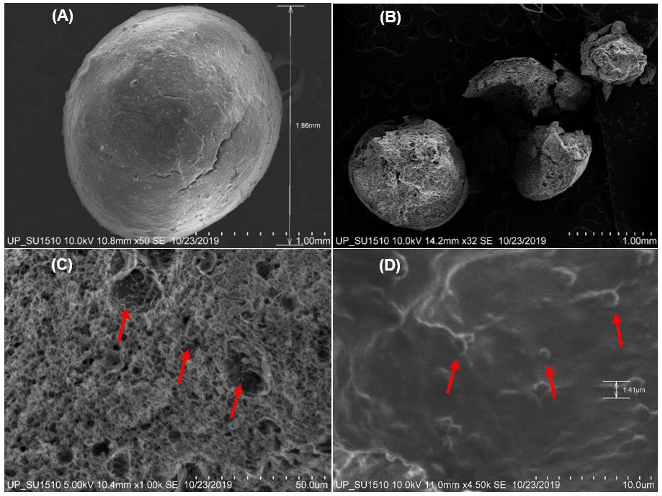VOLUME 14 NUMBER 2 (July to December 2021)

SciEnggJ. 2021 14 (2) 257-266
available online: November 30, 2021
*Corresponding author
Email Address: joancajas@up.edu.ph
Date received: July 13, 2021
Date revised: October 18, 2021
Date accepted: November 3, 2021
ARTICLE
Microencapsulation and Delivery of Pediococcus acidilactici 3G3 in Citrate-crosslinked Chitosan/Polyaniline Composite
Joanne O. Ancajas* and Leslie Michelle M. Dalmacio
Department of Biochemistry and Molecular Biology, College of Medicine,
University of the Philippines Manila. Pedro Gil St., Manila City,
Philippines
University of the Philippines Manila. Pedro Gil St., Manila City,
Philippines
With the emergence of consciousness to the benefits of probiotic microorganisms, their use has created an enormous market worldwide. Numerous methods and strategies are developing, such as microencapsulation, that can protect probiotic bacteria against harsh conditions in the stomach and thus favor their survival in the gut. This study determined the potential microencapsulation and delivery of Pediococcus acidilactici 3G3 in chitosan/polyaniline (CS/PANI) composite, wherein ionic gelation through extrusion method of microencapsulation was used. The optimal CS/PANI ratio that could encapsulate Pediococcus acidilactici 3G3 is 3% CS / 0.5% PANI in 1% sodium citrate. The number of probiotic cells that can be entrapped per microbead is 6.21±0.08 log CFU. The cell release of entrapped probiotics in simulated gastric fluid due to the immediate swelling of the CS/PANI microbeads has a cumulative range of 105-106 CFU, which is considerably higher than expected. At the end of the exposure to the simulated gastric and intestinal fluid (3 h), the entrapped 106 to 107 CFU probiotics were released but only 105 CFU remained viable. It was found that the cell viability of microencapsulated (46.23%±0.02%) probiotics is significantly lower compared to the free cells (69.64%±0.04%) after 30 days of storage at 4 ºC. On the contrary, cell viability on the 30th day of storage at room temperature was significantly higher (p<0.05) for microencapsulated (33.10%±0.13%) than free cells (25.92%±0.16%). In conclusion, microencapsulation of Pediococcus acidilactici 3G3 can be a considerable tool to achieve higher cell viability both during gastrointestinal delivery and storing at room temperature.
© 2024 SciEnggJ
Philippine-American Academy of Science and Engineering